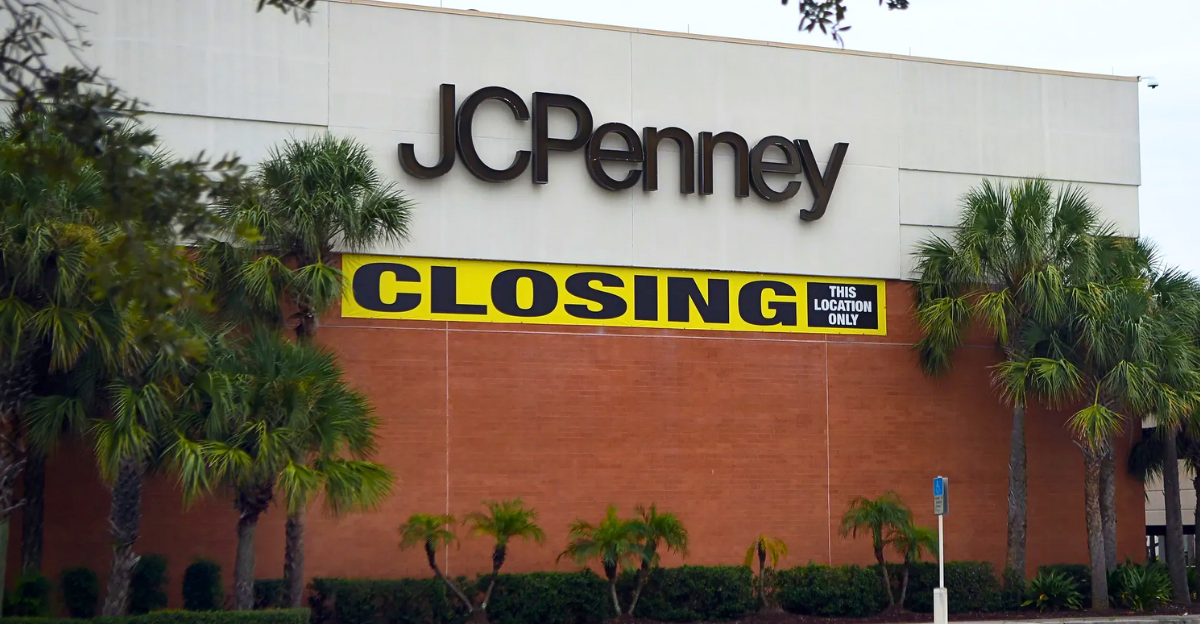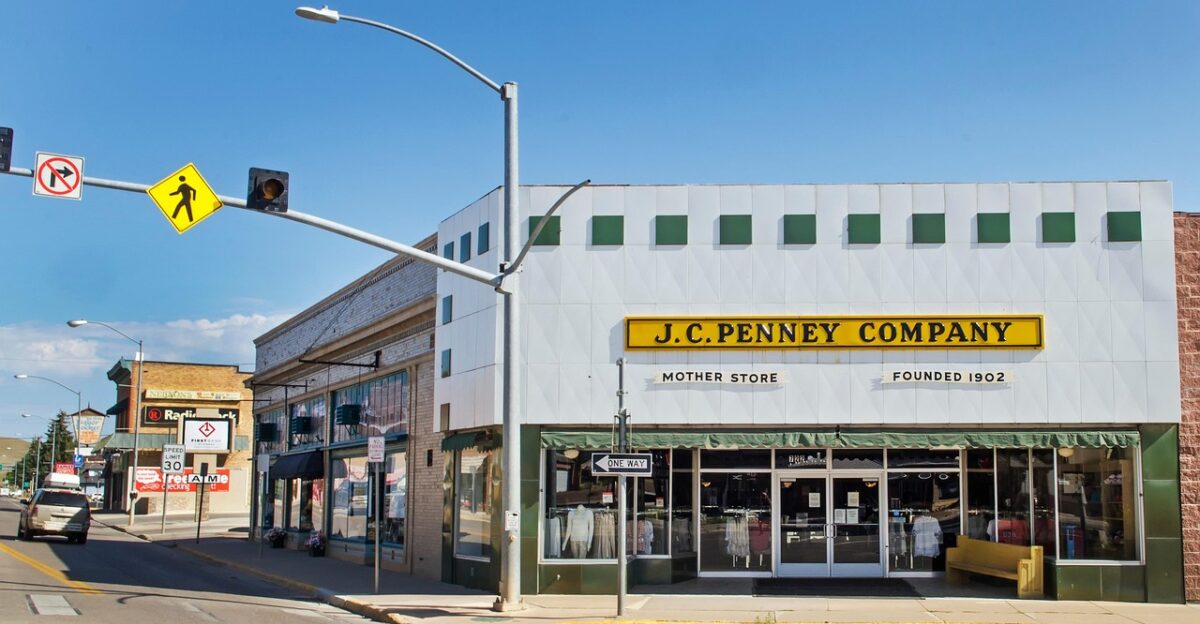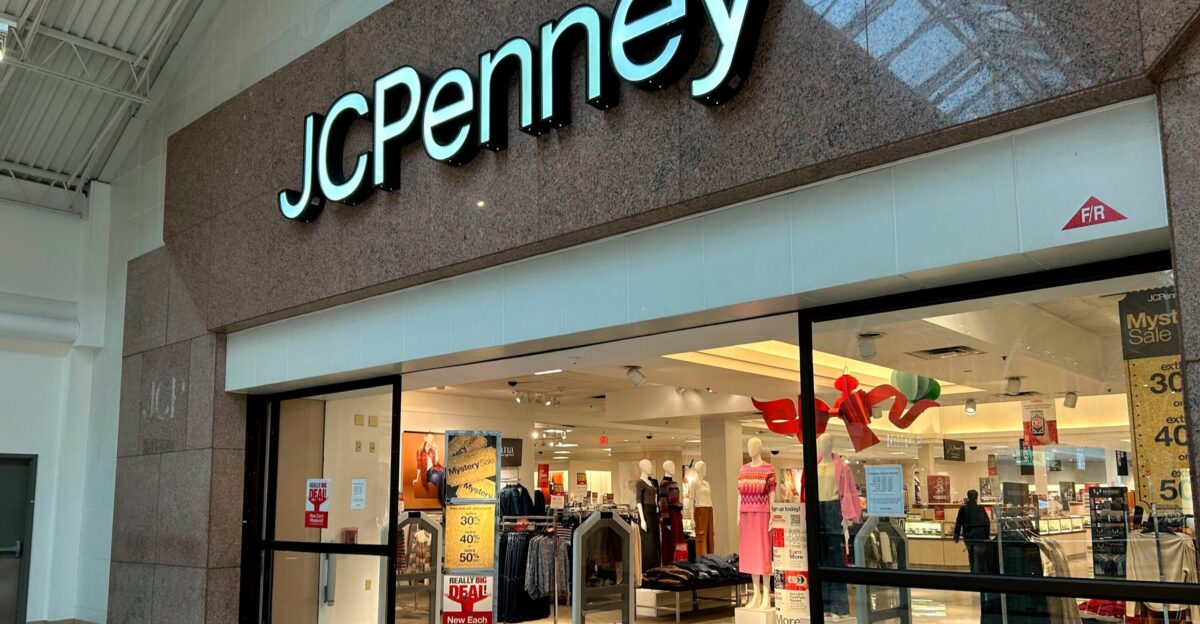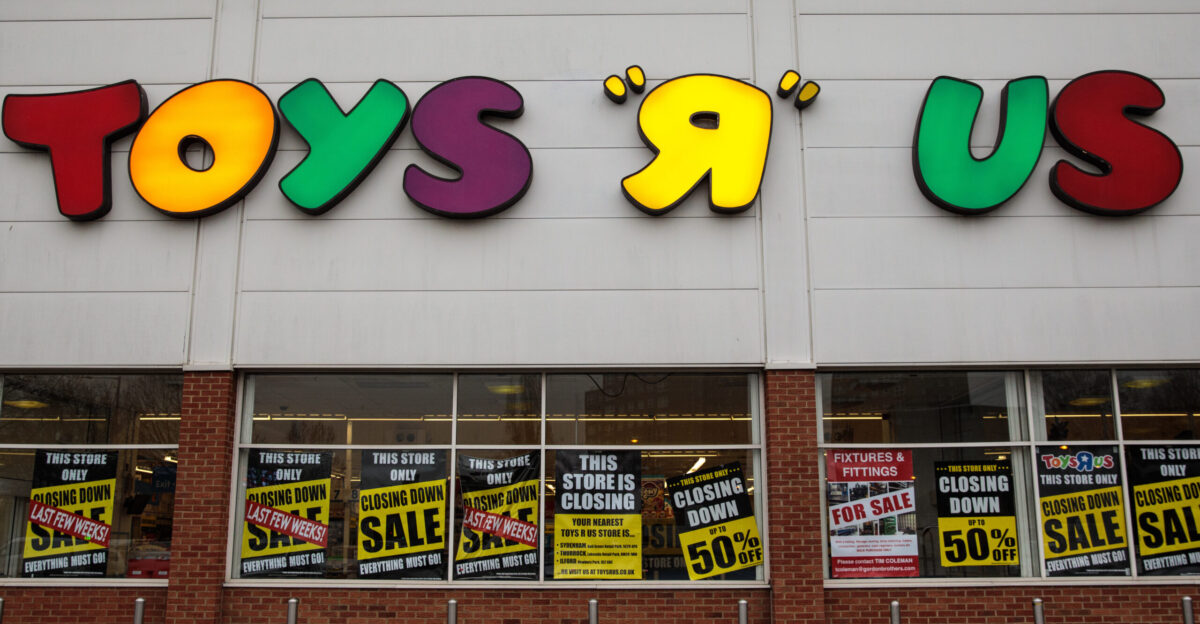
Nearly 120 JCPenney stores across the country are changing hands in one of the largest retail property transactions of 2025. Copper Property CTL Pass-Through Trust agreed on July 23, 2025, to sell 119 JCPenney-owned stores to Boston-based Onyx Partners for $947 million.
The portfolio spans roughly 16 million square feet (about 132,000 sq ft per store) across 34–35 states, averaging 8.4 acres of land each.
This unprecedented, single-day $1B deal highlights accelerating consolidation in U.S. retail real estate – a sector where first-quarter transactions already surged 34% year-over-year to $185 billion, according to JLL.
Financial Earthquake

The all-cash, $947M sale equates to roughly $59 per square foot, reflecting big bets on triple-net leased retail income despite seismic market shifts. The timing is telling: research firm Coresight projects about 15,000 U.S. store closures in 2025, more than double the ~7,300 closures in 2024.
Meanwhile, retail bankruptcies jumped from 25 in 2023 to 51 in 2024, marking the highest bankruptcy tally in years.
In this punishing environment, Onyx Partners’ bid signals confidence that long-term triple-net leases can survive even as e-commerce and value retailers erode traditional department store markets.
Bankruptcy Origins

JCPenney’s real estate fire sale traces back to its May 2020 Chapter 11 bankruptcy, when the 118-year-old chain was overwhelmed by about $5 billion in debt and shuttered stores due to the pandemic. Its creditors formed the Copper Property CTL Pass-Through Trust to liquidate the retailer’s owned real estate.
Under the reorganization plan, Copper Trust acquired 160 former JCPenney stores and six distribution centers to sell off “as promptly as practicable”.
For years, the trust sold individual stores piecemeal to repay lenders.
The Onyx deal is the culmination of that process – a single portfolio sale that quickly meets the trust’s objectives, rather than dozens of smaller transactions.
Industry Pressure

JCPenney’s struggles mirror a sector-wide crisis. Department stores, squeezed between Walmart-type value chains and fast-fashion or online players, have seen profits evaporate.
JCPenney swung from a modest 2023 profit to a $177 million net loss in 2024 as revenue fell about 8.6% to $6.3 billion, despite investing over $1 billion in store upgrades.
Macy’s similarly plans to shutter roughly 150 of its 500+ locations by 2026. Foot traffic at malls is slumping, and overall mall vacancy rates are now the highest of any retail type.
In this climate, traditional department-store anchors have lost their edge: many are closing locations, reshaping entire shopping centers, and forcing owners to find new ways to draw customers.
Transaction Details

Here’s where it gets interesting: on July 25, 2025 Copper Trust announced a binding agreement to sell exactly 119 JCPenney-owned stores to Onyx Partners for $947 million in cash. The deal – set to close by Sept. 8 – follows “an exhaustive marketing process” conducted by Newmark under Hilco’s oversight, Copper Trust officials said.
Triple-net master leases remain in place, so JCPenney will keep running the stores and paying all expenses as before.
Trust CEO Neil Aaronson emphasized that Onyx was chosen as the buyer because its team could close the deal and had the best terms: “after a very thorough vetting… Onyx clearly stood out as our preferred buyer based on their capability to close, their business strategy, and the offered purchase terms. Considering all factors, we believe we have achieved a very fair price for the portfolio”.
Geographic Impact

The portfolio is heavily weighted in populous Sun Belt and key metro markets. Texas alone accounts for 21 of the stores, the most of any state, followed by 19 in California.
Other multi-store states include Florida, Michigan, Arizona and New York. Most stores sit in major metro malls – for example, Houston, San Antonio, Los Angeles, Phoenix and Miami – often in prime retail corridors with strong traffic.
Newmark’s marketing materials noted the assets are “primarily located in large metropolitan areas such as Houston, Austin, Miami, Los Angeles, and New York”.
With JCPenney as a tenant paying rent and expenses under a long lease, the portfolio is expected to generate roughly $100 million in net rent in the first year.
Consumer Continuity

For JCPenney employees and shoppers, the change is largely invisible. All 119 stores will remain open under JCPenney’s management, with the same merchandise, staffing and customer service they had yesterday.
JCPenney stressed in a statement that this is “a change in landlord but does not impact JCPenney store operations,” and that the stores “will continue to operate and serve our loyal customers and communities”.
In practical terms, store managers and associates keep their jobs – JCPenney retains full control over hiring, inventory, and marketing.
The triple-net lease structure simply means JCPenney now rents the buildings from Onyx, but day-to-day life for customers at the cash wrap should feel unchanged.
Private Equity Strategy

For Onyx Partners, this portfolio is a typical net-lease acquisition. The Boston-based firm says it has led over $2 billion in private CRE transactions across 47 states. Net-lease retail properties offer investors predictable rents (often with 10–15 year leases) and minimal landlord responsibilities.
Onyx highlights its “geographic diversity and asset class focus [that] delivered significant risk-adjusted returns while mitigating potential downside exposure”.
In effect, Onyx will collect base rent from JCPenney (with built-in annual escalations) without having to manage the stores.
Net-lease retail drew about $11.3 billion of investment in 2024, as institutions sought steady income amid retail’s turbulence.
Market Evolution

The JCPenney sale underscores a broader retail shift: malls no longer rely on traditional department store anchors. Over the past decade, foot traffic patterns have changed as consumers spend more on services and experiences than goods.
JLL reports that in 2025 service-based tenants (like fitness centers, restaurants, healthcare clinics and entertainment) will lease more space than traditional merchandise retailers – a “historic shift” for the property sector.
Malls and shopping centers are increasingly filled with restaurants, gyms, urgent care centers and coworking spaces.
In place of JCPenney and other big-box anchors, landlords are placing movie theaters, flea markets, climate-controlled community areas and even educational facilities. The aim is to make malls into community hubs rather than just places to buy clothing.
Future Implications

Is this the end of traditional mall-based retail, or a survival strategy in disguise? The Onyx deal is a test: it transfers real estate risk to well-capitalized investors while keeping JCPenney operating on site. Some analysts see parallels to other sale-leaseback models for struggling chains (e.g. Sears, Toys“R”Us) that essentially borrow cash by mortgaging their stores.
Retail consultant Paco Underhill cautions that most malls are under threat: “Ten percent of shopping malls in the U.S. are doing fine, 20% are holding on, and a good 60%-70% are not doing well at all.
Many were built in a hurry and are destined to be torn down,” he says.
The success of Onyx and JCPenney in this venture could influence whether private equity can buoy other legacy retailers. If so, sale-leasebacks might become commonplace; if not, America’s remaining enclosed malls may struggle to survive.
Industry Reaction

Retail analysts are watching Onyx’s first moves closely. On one hand, the deal sends a signal that well-backed buyers see value in net-lease retail, which could inject confidence into financing for similar assets.
On the other, some critics note the price reflects a relatively high capitalization rate (around 10–10.5%), implying skepticism about long-term growth.
Odeon Capital’s Alex Arnold (from CoStar’s July 28 call) observed a “super wide gap” between this portfolio’s pricing and that of comparable net-lease REITs. In other words, some investors wonder if the cash burn at JCPenney will ultimately hurt Onyx’s returns.
For now, the consensus is that Onyx will closely manage the leases and potentially even partner with mall owners on redevelopments to protect its investment.
Retailers’ Future

In JCPenney’s view, this financial move provides breathing room. CEO Marc Rosen said the retailer has been refocusing on its core customers with more value pricing, hoping that being a “cheaper alternative to other department stores” will drive traffic.
The $947M sale essentially pays off the old debt tied to these stores, possibly allowing JCPenney to reinvest in e-commerce, private-label brands or store upgrades.
Other struggling retailers are watching: Kohl’s, for example, announced 27 store closures in early 2025, and some malls now host pop-up outlets or fulfillment centers in former anchor boxes.
If JCPenney can stabilize its finances while continuing normal operations, other chains may consider similar sale-leasebacks to stay afloat without abrupt shutdowns.
Community Impact

For local communities, the deal is a mixed blessing. On one hand, the sale keeps longtime anchors open in their towns rather than risking immediate closures. This matters to thousands of workers: JCPenney employs roughly 60,000 people nationwide (about 5,000 in Texas alone).
Houston-area reporters note that all six JCPenney stores in the region will remain open, allowing customers to keep using the malls and employees to keep working.
At the same time, the new ownership means mall owners and local governments may be less involved in the stores’ fate.
Communities are closely watching mall redevelopment plans; cities like Houston and Miami have already seen JCPenney closings tied to redevelopments (such as warehouses closing or mixed-use conversions).
Other Sale-Leasebacks

JCPenney’s sale is part of a broader trend where retailers monetize real estate to raise cash. In recent years, companies like Bed Bath & Beyond, Toys “R” Us and even Whole Foods have used sale-leaseback deals.
These arrangements allow a retailer to convert illiquid property into immediate funds while continuing to operate on site.
The risk is that the retailer must now cover rent from operating cash flow, which can strain budgets. Mall owners are also adapting: Simon and Brookfield, which own JCPenney’s operating business, often collaborate with investors to backfill vacancies (for example, converting Sears and Bon-Ton spaces into fitness clubs or outlet stores).
Whether Onyx’s approach will be replicated by others depends on these financial outcomes.
The Road Ahead

This mega-deal marks a new chapter in American retail. It shows how private capital and legacy brands are striking uneasy bargains to survive. For Onyx Partners, the next months will be telling: can it earn a profit while JCPenney stays open and tries to regain its footing?
For JCPenney, the outcome may determine whether it remains an anchor tenant at more malls or eventually scales down further.
And for mall owners and shoppers, the deal is a bellwether: if sale-leasebacks keep struggling retailers alive, malls have more time to innovate; if not, more empty anchors will turn shopping centers into redevelopment sites.
As one retail executive put it, “They have to give people a reason to come back” – and the success of Onyx and JCPenney will test whether that is still possible in a post-anchor world.